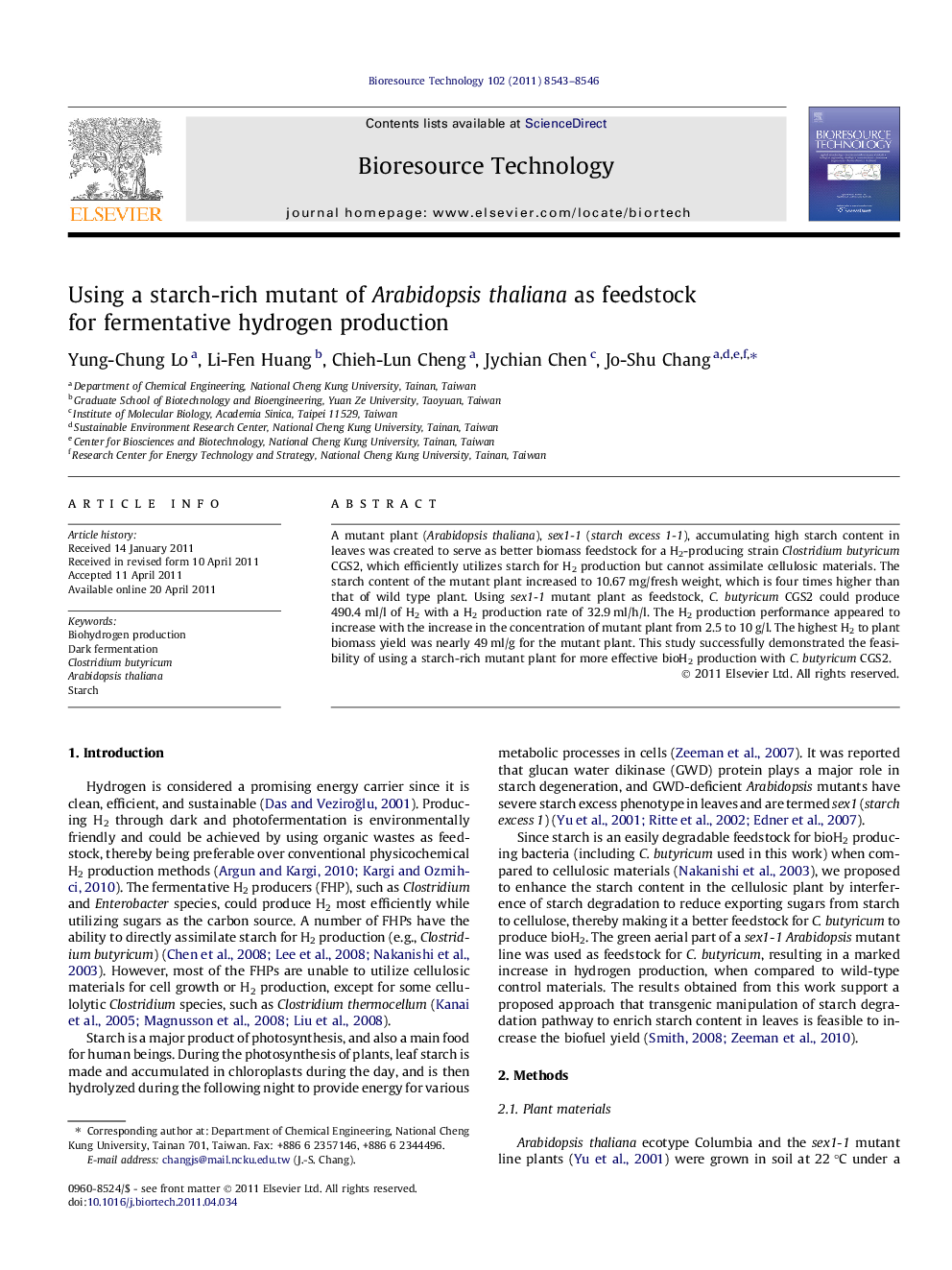| Article ID | Journal | Published Year | Pages | File Type |
|---|---|---|---|---|
| 681776 | Bioresource Technology | 2011 | 4 Pages |
A mutant plant (Arabidopsis thaliana), sex1-1 (starch excess 1-1), accumulating high starch content in leaves was created to serve as better biomass feedstock for a H2-producing strain Clostridium butyricum CGS2, which efficiently utilizes starch for H2 production but cannot assimilate cellulosic materials. The starch content of the mutant plant increased to 10.67 mg/fresh weight, which is four times higher than that of wild type plant. Using sex1-1 mutant plant as feedstock, C. butyricum CGS2 could produce 490.4 ml/l of H2 with a H2 production rate of 32.9 ml/h/l. The H2 production performance appeared to increase with the increase in the concentration of mutant plant from 2.5 to 10 g/l. The highest H2 to plant biomass yield was nearly 49 ml/g for the mutant plant. This study successfully demonstrated the feasibility of using a starch-rich mutant plant for more effective bioH2 production with C. butyricum CGS2.
► We created a starch-rich Arabidopsis plant to serve as better feedstock for bioH2 production. ► The mutant plant contained 4-time higher starch content than that of wild-type plant. ► An indigenous isolate Clostridium butyricum CGS2 was used to efficiently produce bioH2 using the mutant plant at different feedstock loadings. ► This work demonstrated the feasibility of applying genetic modification techniques to improve the quality of feedstock for bioH2 production.
